Featured Photo Above:
Combined 1903 World Series Photo: Pittsburgh Pirates and Boston Pilgrims
(Color Restoration by Chris Whitehouse of Mancave Pictures)
Baseball History Comes Alive Now Ranked As a Top Five Website by Feedspot Among All Baseball History Websites and Blogs!
(Check out Feedspot's list of the Top 35 Baseball History websites and blogs)

Guest Submissions from Our Readers Always Welcome! Click for details
Scroll Down to Read Today’s Essay
Subscribe to Baseball History Comes Alive for automatic updates. As a Free Bonus, you’ll get instant access to my Special Report: Gary’s Handy Dandy World Series Reference Guide!
Rube Waddell Photo Gallery
Click on any image below to see photos in full size and to start Photo Gallery:
Today Bill Schaefer returns with an interesting essay about one of the most eccentric ballplayers ever to lace up spikes, Rube Waddell. We’ve all read stories about Rube in the past, but Bill provides plenty of fresh information about baseball’s unique man-child, including his annoying habit of eating crackers in bed! I think you’ll enjoy it. And thanks to Chris Whitehouse and Mancave Pictures for granting us permission to feature his beautiful life-like color restoration of Rube. –GL
RUBE WADDELL: THE ULTIMATE ZANY
“He had more stuff than any pitcher I ever saw”-Connie Mack
“When Waddell had control and some sleep, he was unbeatable.”-Branch Rickey
As a young man, he possessed the chiseled features of a matinee idol and developed a penchant for eating animal crackers in bed.
Biographer Alan Levy said: “He was a decidedly different sort of a child.” At the age of three, he wandered over to a local fire station and stayed there for several days (much to his parent’s consternation). Waddell once left in the middle of a baseball game to go fishing and would delay games to play marbles with kids.
When George Edward Waddell was born October 13, 1876, in Bradford, PA, the cosmos held its breath, with a sense that this was going to be no ordinary human being. He would grow to be powerfully constructed at 6’1”,196 pounds. A jumbo-sized athlete to be sure, when you consider the average male height in the late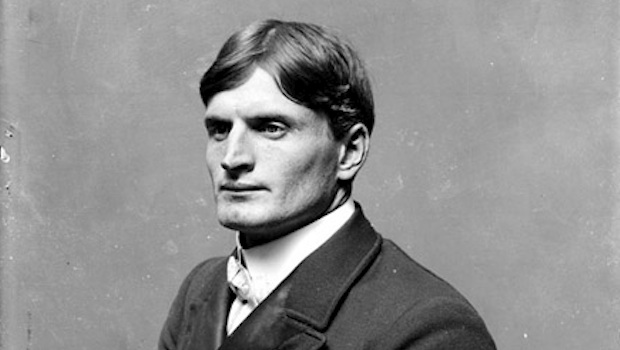 nineteenth century was less than 5 feet 7 inches tall. George Edward toiled on mining and drilling sites as a kid, which helped his conditioning and arm strength. The nickname “Rube” was bestowed upon him as a natural consequence of his simply looking like a big old country boy.
nineteenth century was less than 5 feet 7 inches tall. George Edward toiled on mining and drilling sites as a kid, which helped his conditioning and arm strength. The nickname “Rube” was bestowed upon him as a natural consequence of his simply looking like a big old country boy.
According to SABR writer, Dan O’Brien,
“He entered this world on Friday the 13th and exited on April Fools Day. In the 37 intervening years, Rube Waddell struck out more batters, frustrated more managers, and attracted more fans than any pitcher of his era.”
He combined charisma, alcoholism, heroic qualities, child-like tendencies, and an extraordinary pitching talent. The Columbus Dispatch wrote,
“There was a delicious humor in many of his vagaries…an ingenuousness that made them attractive to the public.”
He did cartwheels off the mound in victory and once disappeared for months during an off-season, only to be discovered wrestling alligators in a circus. He tried out for the Pittsburgh Pirates in 1897 but was seated next to Manager Patsy Donovan during breakfast and was released immediately after the meal.
However, it was also his pitching talent that made Rube a fan favorite. He threw a heavy fastball and a curve that swooped and darted and may have been the best breaking pitch in the major leagues. Let’s look at the record: Over the course of 13 years (1897-1910), Waddell pitched for the Louisville Colonels (NL), Chicago Orphans, Philadelphia Athletics, and St. Louis Browns. The books show a won-lost record of 193-143, with a career ERA of 2.16 (eleventh all-time), 261 complete games, and 50 shutouts. He led the league in ERA twice (1900, 1905), had four consecutive years of 20 or more wins (1902-1905), topped the circuit in strikeouts an amazing six straight years (1902-1907); and in ’03 and ’04 was the only pitcher to compile consecutive 300-strikeout seasons until Sandy Koufax did it in 1965 and 1966. Waddell’s 349 K’s in 1904 represented the modern-era major league season record for more than 60 years (sixth on the all-time list) and is still the American League single-season mark for a left-handed pitcher. 1905 saw Waddell win the Triple Crown for pitching with 27 wins, 287 strikeouts and a minuscule 1.48 earned run average.
Rube Waddell was possibly the most eccentric player in the history of the game. According to baseball historian Lee Allen, he began the 1903 season sleeping in a firehouse in Camden NJ and ended it tending bar in a saloon in Wheeling West Virginia. In between, he won 22 games for the Athletics; toured the country in a vaudeville play called The Stain of Guilt; got married; saved a woman from drowning; accidentally shot a friend through the hand; and was bitten by a lion. The play was well-received by critics but Waddell’s performance was panned royally. He couldn’t memorize lines so he was permitted to ad-lib short responses. Nevertheless, his charismatic stage presence drew crowds from far and wide—particularly acclaimed was a scene in which Waddell lifted the actor playing the villain and threw him across the stage with ease. Rube used his sudden stardom to negotiate higher wages for his baseball career (though his highest salary was reported to be a meager $2800).
You’d like to be in the trenches with Rube: In 1904, he carried A’s center fielder, Danny Hoffman, knocked unconscious by a fastball to the temple, over his shoulder, on the run across the field…flagged a carriage to a nearby hospital, and thus saved his life.
He also helped save the city of Hickman, Kentucky twice from floods, in 1912 and 1913. Heroically working in icy water for hours led to pneumonia and then tuberculosis, from which he never fully recovered.
Unfortunately, his flakiness and drunken escapades alienated many managers and players, and Rube was shipped to the minor leagues numerous times because of his disruptive tendencies. He was easily distracted by shiny objects held up in the crowd, seemingly mesmerized by them. This could have been a sign of autism, not widely researched back in the day. Only Cornelius Alexander McGillicuddy could tolerate him for any length of time. It paid off for Connie Mack with a Philadelphia A’s World Series birth in 1905, mostly due to Waddell’s brilliance. (According to SABR, gamblers may have bribed Rube, who needed money, to miss the WS against the winning NY Giants). He stayed with “The Tall Tactician” for six years. His battery mate and drinking buddy in Philly was catcher Ossee Schreckengost (Schreck).
My dad used to tell me about Rube Waddell, who ate animal crackers in bed. The story was that his roomie Ossee Schreck was not a happy camper. Here’s part of a
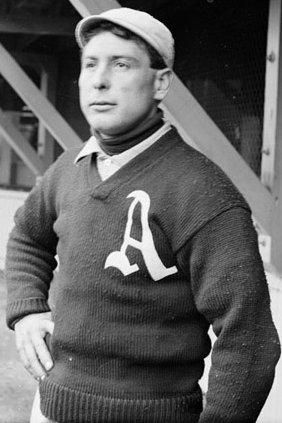
letter to Connie Mack, purportedly written by Schreck, which appeared in the papers, circa 1906:
“Dear Connie: This is not a touch for any advance or increase in salary, but something much more serious, and as it won’t be long before the Athletics start south for spring practice. I am going to ask you to put Waddell under another charge this year. While I did not mind Rube bringing mocking birds and a reptile or two into our sleeping apartments down south, I do object to his habit of eating crackers in bed…many of them resembling animals. This Rube does nightly.
His crunching of the crackers…the bed was full of crumbs…I would like to suggest that if you can put a clause in his contract that he is not to eat crackers in bed during the 1907 season…we will continue to be real good friends as of yore.”
Reports that the request was actually put in the contract might be apocryphal.
Waddell was elected to the HOF in 1946 by the Veterans Committee, looking to enshrine a number of players from his era who had contributed to the growth of the game. Rube drew fans, like a magnet, to ballparks around the country.
Down to 130 pounds from consumption, Waddell passed away on April 1, 1914, in a sanitarium in Elmendorf, Texas. “Dad always had a gleam in his eye when he told stories about Rube Waddell,” said Connie Mack’s daughter, Ruth Mack Clark. “Dad really loved the Rube.”
Bill Schaefer
SOURCES: Grunge.com The-true-tragic-story- of- Rube- Waddell; SABR article by Dan O’Brien; Wikipedia, Rube Waddell; baseball history daily.com “Rube and Ossee”; Rube Waddell baseball-reference.
Subscribe to our website, “Baseball History Comes Alive!” with over 1200 fully categorized baseball essays and photo galleries, now closing in on the one million hits mark with 805K hits and over 600 subscribers: www.baseballhistorycomesalive.com
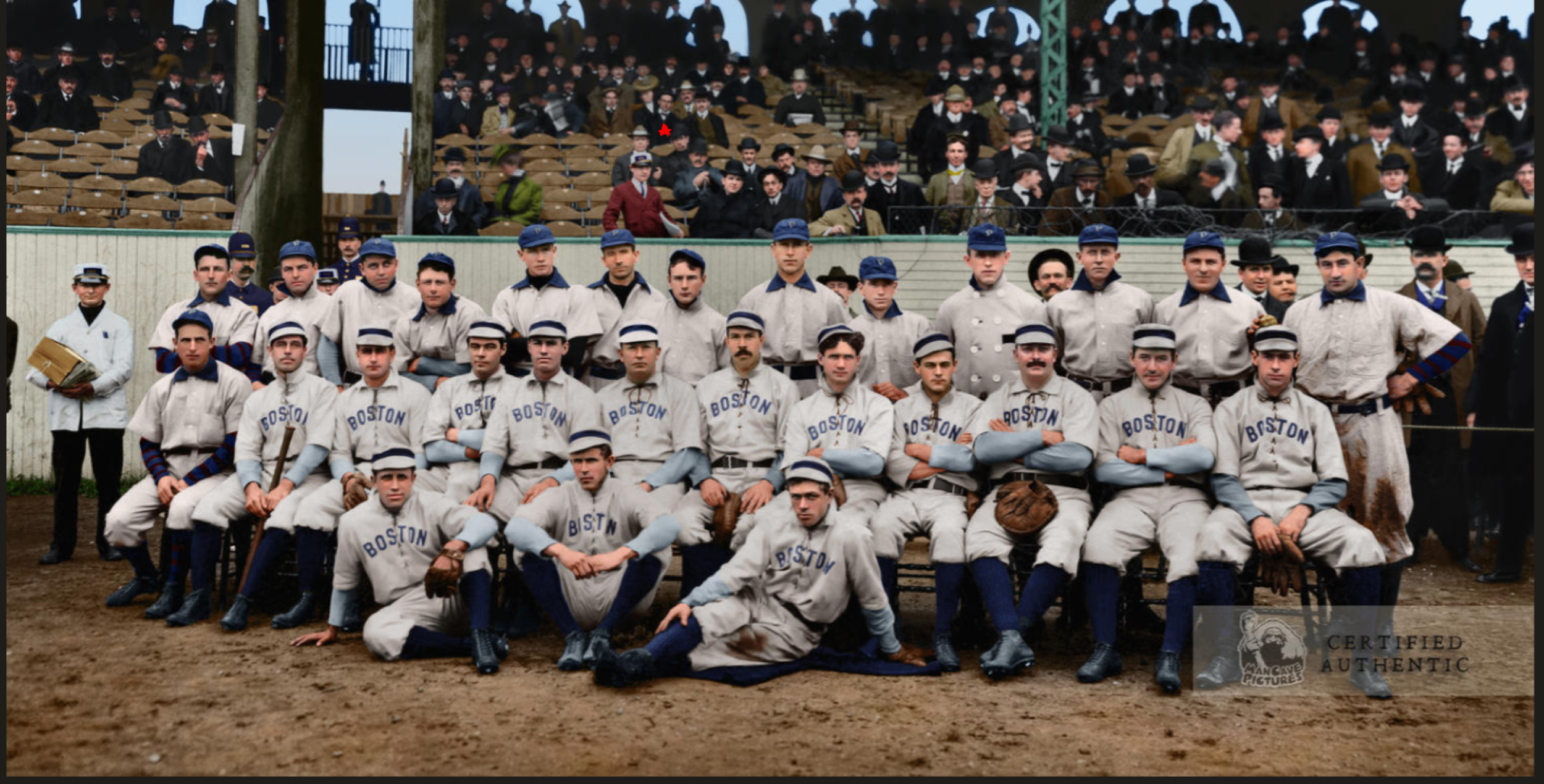
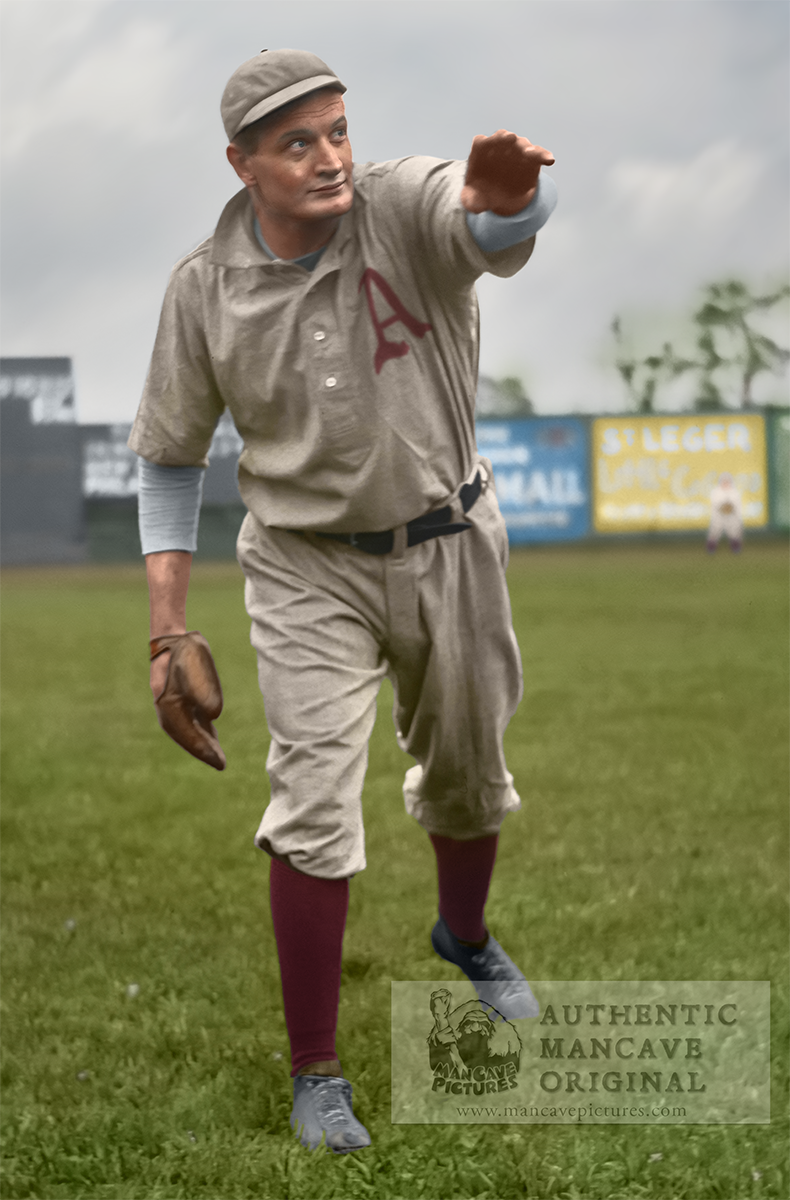
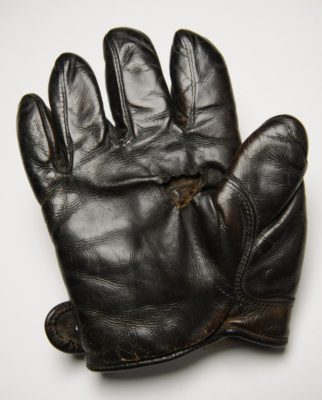
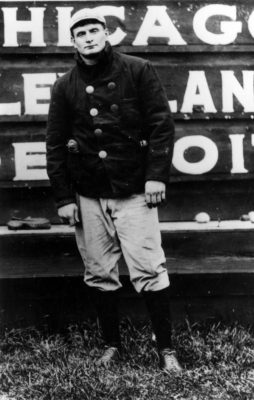
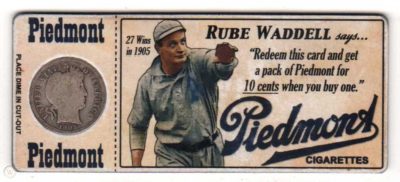
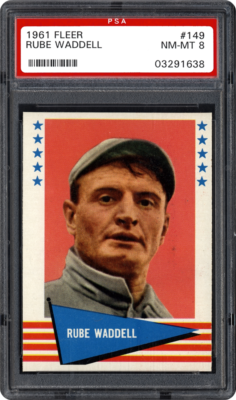
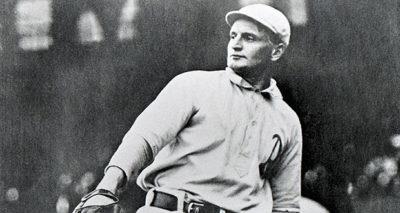
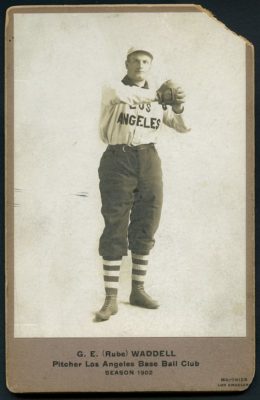
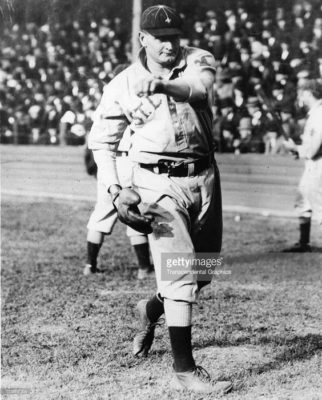
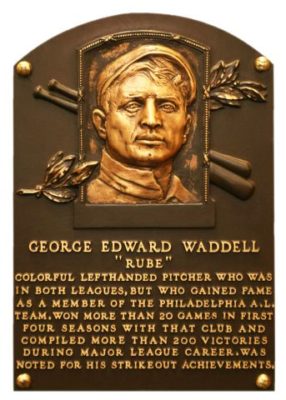
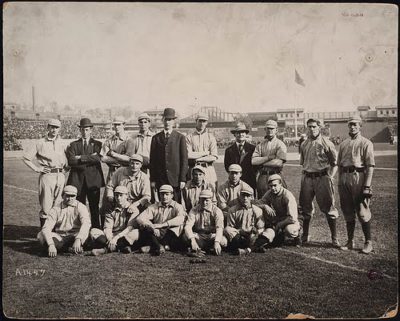
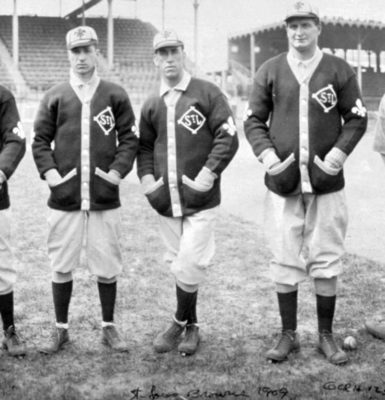
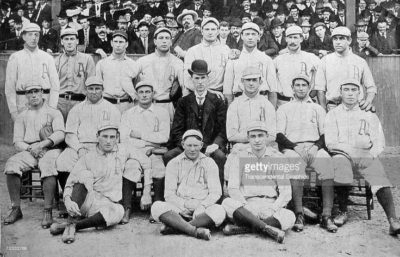
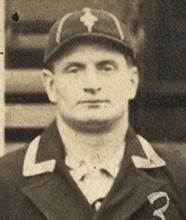
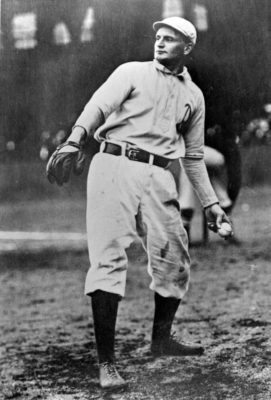
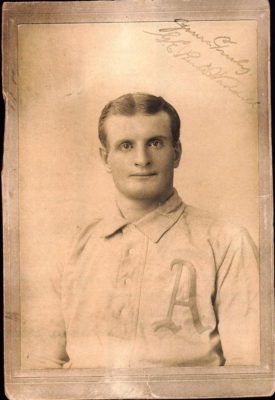
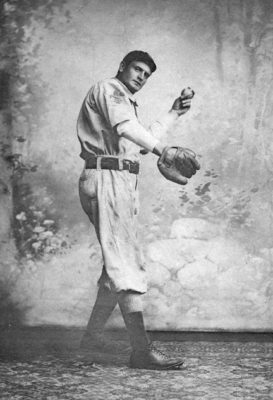
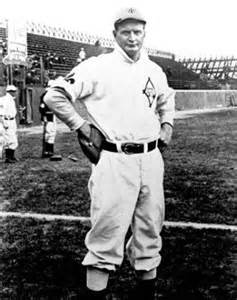
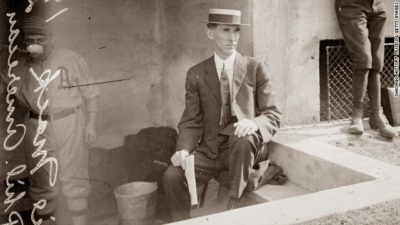
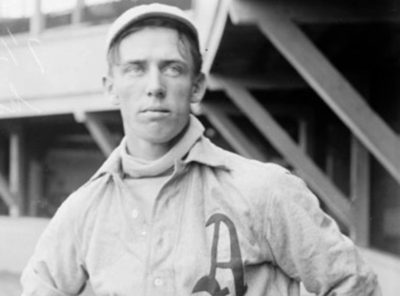
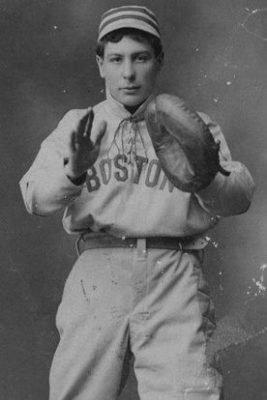

Just a beautiful array of photos, Gary!
Several of our Facebook fans think the Rube Waddell story should be made into a movie–a memorable character and a truly dominant pitcher when not distracted.
Applying a modern metric, Rube led the league an impressive five times in FIP (fielding independent pitching). This simply means a pitcher’s strikeouts, walks and home runs allowed independent of his team’s fielding prowess. In the complete formula, the average major league fielding percentage is used as a constant.
Many analysts think FIP is even more definitive than ERA in measuring a pitcher’s effectiveness.
Real nice essay on Rube Bill, and some interesting observations…can’t say I’ve ever heard of that stat.
Loved this article, Gary. I’ve heard stories about Waddell’s eccentricities. Thank you for bringing his story to life with your words and photos.
Thanks Steve. Bill Schaefer wrote this one, but he’ll see this and I know he’ll appreciate the kind words!
Thanks, Steve–I do appreciate the nice response!